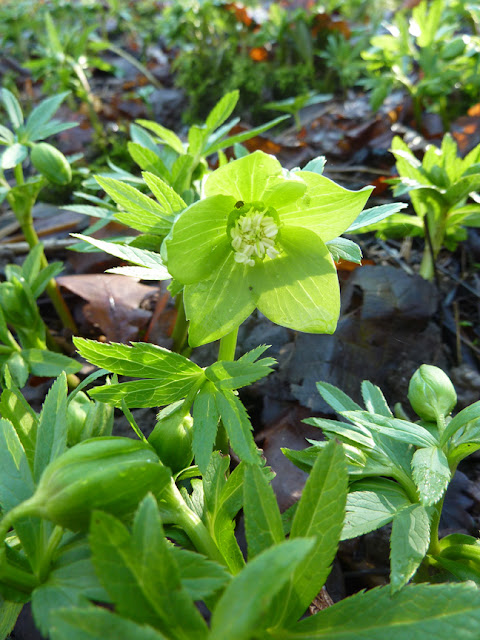Birds 0 Plants 1
The grey, wet murk of the past few days had finally sodded off and ND&B-land found itself basking in a low, blinding sun. Out came the bins, on went the ruck-sack and I hot-footed it up to Epsom and Walton Downs for a mornings aimless wander. I needn't have taken the bins as the birding was dire. However, as befitting a winter's morning playing at being spring, I sought out a patch of Green Hellebore that is present in a small wood on the lower slopes of Walton Downs. Only a couple of flowers were open (above) with most of the small population a little way off from flowering (below).
The Woodland Trust seem to have upped the ante in the creation of their Millennium Woodland on parts of the downland farm fields (click here to find out more about this project). Piles of posts and plastic tubing were lying in strategic positions, but the dead give-away were a number of posters along the public footpaths, inviting volunteers to come along for tree-planting sessions later in the month. The fields that hold the rare arable plants are going to need a helping hand if they are going to survive. When the land was farmed, a shooting syndicate had permission to shoot over the area - this meant that the farmer left wide margins around the field edges, didn't overdose on chemicals and planted strips of sacrificial crop (to produce seed for the Pheasants, Red-legged Partridges and Wood Pigeons to feed on). The by-products of this were that the rare arable plants thrived - as grasses could not get a toe-hold to compete - and in winter flocks of finches fed on the readily accessible seed. No longer. And the 1-3 pairs of Lapwing that used to breed here failed to appear in 2016. I fear that this gem of an area is going to lose more than a few notable species.






Comments